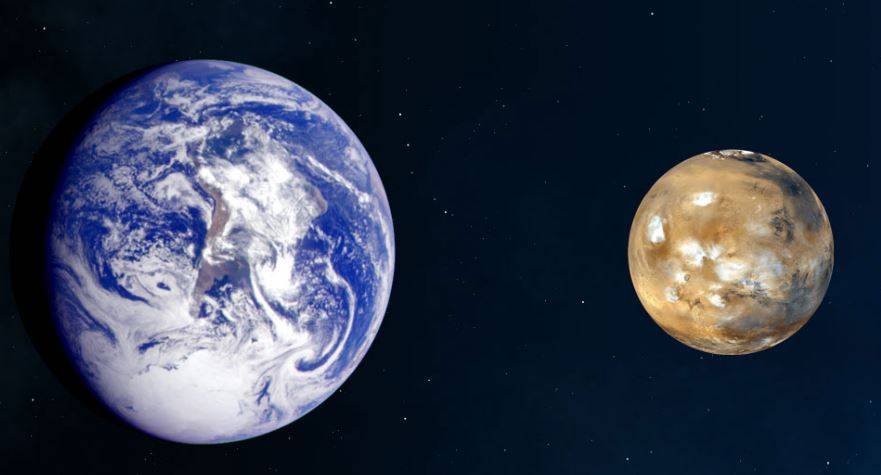The planet Mars will be as close to the Earth as it has been in the last 15 years at the end of July. Parkland College and the Champaign-Urbana Astronomical Society will help skywatchers catch a view of our neighboring planet.
The Staerkel Planetarium at Parkland College is featuring Mars’ close approach in its 7 p.m. Friday “Prairie Skies” program on July 20th, 27th and Aug. 3rd. Additionally, the Champaign-Urbana Astronomical Society will offer free Mars telescope viewing Aug. 3rd beginning at dusk at Meadowbrook Park in Urbana, behind the Prairie Play playground.
The telescope viewing is weather-permitting and, if skies are cloudy, observing will move to Saturday, Aug. 4th.
With Mars being the next planet out in our solar system, it revolves around the Sun at a slower speed. Every 26 months the Earth catches and passes Mars just like a race car lapping a slower car on the track. When the two are on the same side of the Sun we have “opposition,” where, from our point of view, Mars is opposite the Sun. Thus Mars is closer to the Earth and rises as the Sun sets. But not all Martian oppositions are the same, according to Dave Leake, director of the Staerkel Planetarium.
“The orbit of Mars is far from a perfect circle, so Mars can be closer to the Sun at certain times in its orbit,” he said. “It ends up that Mars will be closest to the Sun on Sept. 15th. Though the opposition of Mars is July 27th, Mars is actually closer to the Earth four days later.
“In August 2003, we were 34.6 million miles from Mars. At the end of this month, we’ll be close to 35.8 million miles.” The next time Mars will be this close will be in 2035.
Normally anything close is bright and large, and Mars has been steadily brightening. However, telescope views of Mars may be hindered by a recent dust storm on the planet that has reached global proportions, Leake said.
“We hope to see a south polar ice cap on Mars and some other surface markings, but it will depend on how much the dust storm subsides in the next few weeks,” he added.
Those without telescopes can still watch Mars go through its “retrograde loop” over the next two months.
“As the Earth passes Mars, Mars will appear to move backwards in the sky, much like a car appears to go backwards when you pass it on the highway,” Leake explained. “Planets and stars appear to move from east to west due to the Earth’s rotation, but planets usually move west to east in their orbits. Mars began its east to west motion against the backdrop of stars in late June. It will move a little westward each night until about Aug. 27th when it will resume its eastward motion. Note the position of Mars with the other stars every 4–5 nights, and you will be able to see this motion.”
For a schedule of planetarium programming, visit parkland.edu/planetarium or call the show hotline at 217/351-2446.
For more information on the CU Astronomical Society, visit cuas.org. For cancellation information on the Aug. 3 event, call 217/351-2567.
[Image source: mars.nasa.gov]
Editor’s Note: A previous version of this SPlog mentioned the viewing would be held at Parkland College, which was a mistake — we’ve since updated the URL and title of the post.








